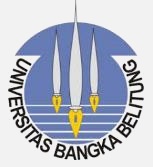English Presence in Our Landscape: A Global Community at Play
Abstract
English today is everywhere in our landscape. It appears in every commercial item. People seem to have a strong belief that language has an extra magical power to sell; it contains a powerful mantra to persuade consumers to choose their products. With its extensive use, English marks a kind of global community. This study makes an online survey through Street View in Google Maps to collect data on the use of English in the landscapes, particularly in the area of Simpang Lima, Semarang. This employs a perspective of language ecology questioning the ideology behind the rampant English, dominating our place. Based on the data collected, it proves that English appears the most. English is found on the billboards of automotive, mobile phones, cosmetic products, cigarettes, electronics, online shops, internet-based transportation services, housing complexes/real estate, and cellular providers. English items are equal to Indonesian. In Indonesian ads, English many times is featured to be a tagline. Meanwhile, English ads give no space for Indonesian items. Here, English surely does not symbolize the language of the community. We do believe that Semarang is dominantly occupied by Indonesian people. However, it is proved that English has shown its domination in the space, with no real users in the field. It is there for its commercials effects and association, based on the shared assumption of its prestige, modernity, beauty and power.
Downloads
References
complexity. Bristol: Multilingual Matters.
Edelman, L. (2009). What’s in a name?: Classification of proper names by language. In E.
Shohamy & D. Gorter (Eds.), Linguistic landscape: Expanding the scenery (pp. 141-154).
New York, NY: Routledge.
Huebner, T. (2009). A framework for the linguistic analysis of linguistic landscapes. In E.
Shohamy & D. Gorter (Eds.), Linguistic landscape: Expanding the scenery (pp. 70-87).
New York, NY: Routledge.
Hult, F. M. (2009). Language ecology and linguistic landscape analysis. In E. Shohamy & D. Gorter (Eds.), Linguistic landscape: Expanding the scenery (pp. 88-104). New York, NY: Routledge.
Lado, B. (2011) Linguistic landscape as a reflection of the linguistic and ideological conflict in the Valencian community. International Journal of Multilingualism, 8(2), 135 – 150.
Landry, R. and Bourhis, R.Y. (1997) Linguistic landscape and ethnolinguistic vitality: An empirical study. Journal of Language and Social Psychology 16 (1), 2349.
Malinowski, D. (2009). Authorship in the linguistic landscape: A multimodal-performative
view. In E. Shohamy & D. Gorter (Eds.), Linguistic landscape: Expanding the scenery. (pp.
107-125). New York, NY: Routledge.
Pennycook, A. & Otsuji, E. (2014) Metrolingualism: Language in the city. London/New York:
Routledge.
Rodriguez, J. (2009) Interpreting the linguistic traits of linguistic landscapes as ethnolinguistic vitality: methodological approach. Revista Electronica de Linguistica Aplicada, 8, 1- 15. Rowland, L. (2012) The pedagogical benefits of a linguistic landscape project in Japan. International Journal of Bilingual Education and Bilingualism, 16(4), 494-505.
Rowland, L. (2012) The pedagogical benefits of a linguistic landscape project in Japan.
International Journal of Bilingual Education and Bilingualism, 16(4), 494-505.
Scollon, R. and Scollon, S.W. (2003) Discourses in Place: Language in the Material World.
London and New York: Routledge.
Spolsky, B. (2009). Prolegomena to a sociolinguistic theory of public signage. In E. Shohamy
& D. Gorter (Eds.), Linguistic landscape: Expanding the scenery (pp. 25-39). New York, NY: Routledge.
Wang, J. (2013) Linguistic landscape of China: a case study of shop signs in Beijing. Studies in Literature and Language, 6(1), 40 – 47
Undang-Undang No. 24 Tahun 2009
Online resources
www.insee.fr/en/metadonnees /definition/c1074 accessed in (Oct 13, 2018)
www.infosputareklame@blogspot.com accessed in (Oct 13, 2018)
Copyright (c) 2022 Owned by the Author(s), published by Berumpun: International Journal of Social, Politics and Humanities

This work is licensed under a Creative Commons Attribution 4.0 International License.









